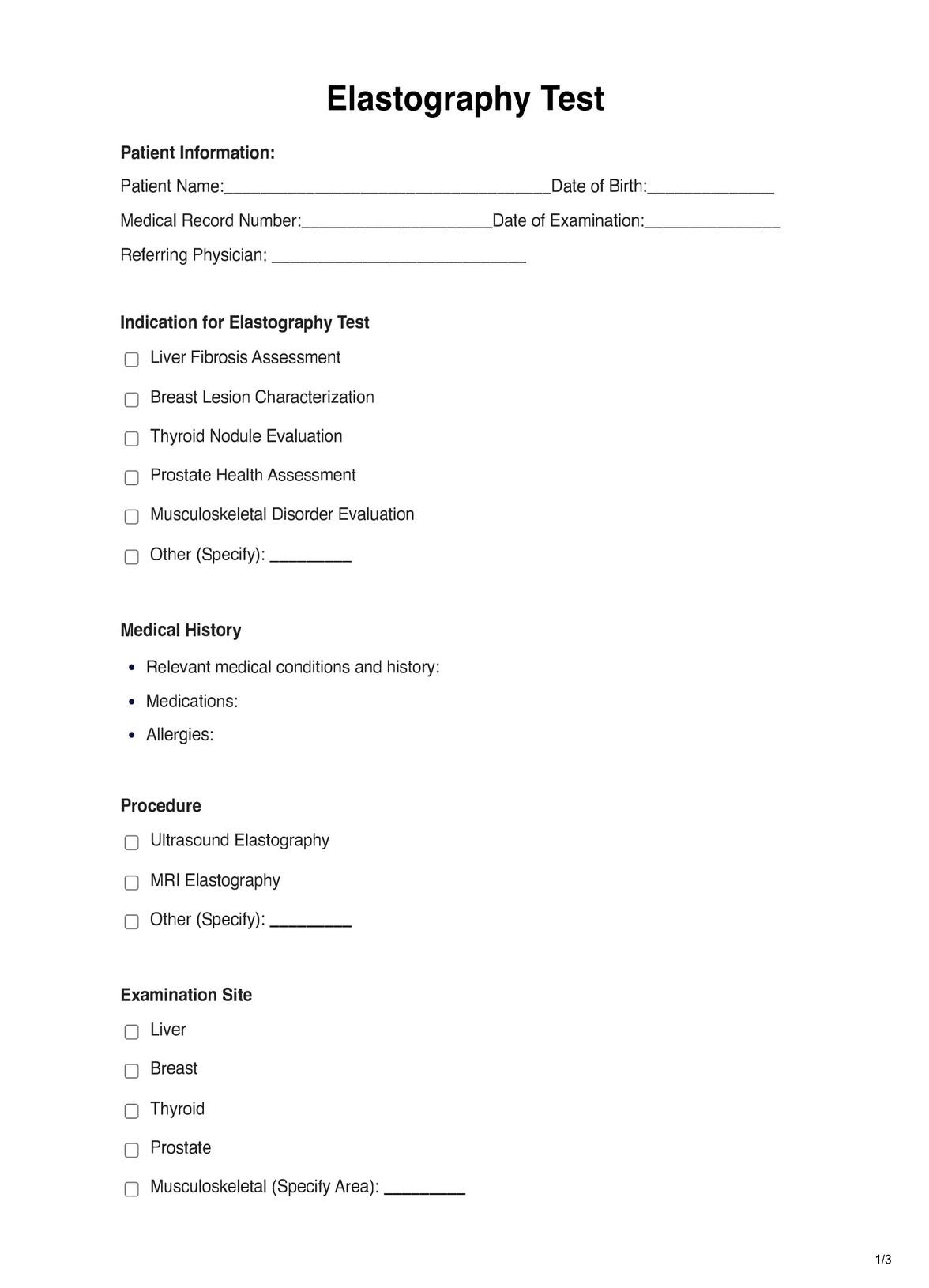Elastography tests are typically requested by healthcare providers, including radiologists, hepatologists, oncologists, and other specialists, based on the patient's medical condition and symptoms.

Elastography
Learn about the non-invasive Elastography Test for tissue assessment. Valuable for liver, breast, and more. Discover its many uses and benefits.
Elastography Template
Commonly asked questions
Elastography tests are used when there is a need to assess tissue stiffness or elasticity for diagnostic purposes. They are commonly used for liver fibrosis staging, breast lesion characterization, thyroid nodule evaluation, and more.
Elastography tests involve applying mechanical waves to tissues and imaging the resulting tissue deformation to assess stiffness. Depending on the clinical need, the technique can be performed using ultrasound, MRI, or other imaging modalities.
EHR and practice management software
Get started for free
*No credit card required
Free
$0/usd
Unlimited clients
Telehealth
1GB of storage
Client portal text
Automated billing and online payments











